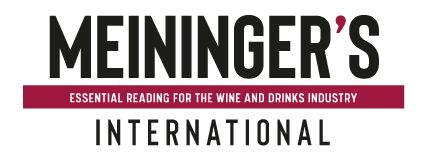The Russian government plans to invest about 4bn rubles ($110m) in the expansion of domestic vineyards – to an area of up to 140,000 ha by 2020.
According to the Russian Ministry of Agriculture, these investments will double the current vineyard area – estimated at 70,000 ha – and will help to partially reduce Russia’s dependence on wine imports from the EU states, which currently account for more than 25% of the Russian wine market.
According to Anna Lyubovedskaya, corporate affairs director of the Russian Union of Organic Farming, the plan is that the new vineyards will be established in Russia’s leading wine regions: the Krasnodar region, the North Caucasus, the Rostov region and the Crimean Peninsula.
At a glance
According to data from the Russian Ministry of Agriculture, there are approximately 280 specialist farms involved in the cultivation of vineyards in Russia, of which about 60 have primary processing capacities. Up to 60% of Russian vineyards are situated in the Black Sea Kuban region of southern Russia, the centre of Russian winemaking. Among the largest local producers are such companies as Abrau-Durso, Zaporozhye, Caucasus, Kuban-Vino, Myskhako, Russian Wine and Fanagoria. It is possible that the majority of new vineyards will be established in this region.
Stavropol is Russia’s second-largest winemaking region, accounting for up to 13% of the total Russian vineyard area, and for up to 15% of total grape production. Among the largest regional producers are Levokumskoe, Mashuk, Praskoveyskoe and Stavropol winemaking enterprises.
Finally, there is also a possibility of vineyard expansion in the Rostov region, where the largest wine producers are Millerovskiy Winery, the Rostov Factory of Sparkling Wines, Tsimlyansky wine and Yantarnoeu.
In addition to the expansion of vineyards, a significant part of the funds will be invested in the purchase of new equipment, and into scientific research into winemaking.
Strategic goal
According to Leonid Popovich, president of the Russian Union of Winegrowers and Winemakers (RUWW), Russian wines have huge potential and may successfully compete with imports. According to RUWW, the development of domestic winemaking is also strategically important due to the possibility being discussed by some Russian officials to restrict wine imports from the EU in response to the ban imposed by the EU on the export of Crimean wines to the European Union.
However, RUWW analysts believe that the investments of $120m will be insufficient to implement the ambitious goals that the Russian government has declared it has for winemaking. According to their calculations, the cost of close planting could be in the range of €2,500.00 to €5,000.00 per ha. For this reason, they believe the volume of investments should be at least eight to ten times higher than the figures announced.
This position is also held by Vadim Drobiz, director of the Center of Research of Federal and Regional Alcohol Markets, one of Russia’s leading analyst agencies of the wine and alcohol market, who said that the volume of allocated funds is insufficient to radically change the situation of the wine industry. Nevertheless, he believes that the development of the domestic wine industry should become one of the most important goals for the Russian government for the next several years, as the wine industry may add up to 10bn rubles ($277m) a year to the federal budget in the form of excise taxes.
Drobiz adds that some Russian regions have already taken up the practice of co-funding the establishment of vineyards with local producers; however, despite this, such a practice remains uncommon.
According to Lyubovedskaya, part of the funds should be also invested in the improvement of the current condition of the existing vineyards. “The current condition of Russian vineyards remains poor. The majority of them have not been improved since the 1980s,” she says. “There is a need to introduce new technologies in the field of Russian winemaking, and in particular to implement completely new, organic methods of winemaking.” She adds that products created from such methods will be in higher demand in both the domestic and foreign markets, and that the domestic wine industry needs a significant increase in funding over the next few years.
The calls to increase state support of the industry have not, however, received support from the Russian government. According to Nikolay Fedorov, Russia’s Minister of Agriculture, the discussed sum of €1bn is enormous and the Russian government currently has no plans to provide it from the federal budget. Instead, the government plans to create conditions for the attraction of private investors to the industry – including foreign investors.
According to Rustam Temirgaliev, an adviser for Economic Affairs in the Crimean government, there is a strong interest by foreign investors for investing funds in the development of Russian and – in particular - Crimean winemaking, despite the sanctions. According to him, the potential investors include companies from France, Switzerland and some other EU countries. Temirgaliev says that Swiss investors, for example, have expressed an interest in the acquisition of Novy Svet, one of Crimea’s largest winemaking enterprises. A group of Finnish investors is also considering building a large winemaking plant on the Peninsula.
Temirgaliev adds that Russian and Crimean winemaking will not be negatively affected by the recent sanctions imposed on Crimea’s leading winemaking enterprises, among which are the Massandra, Magarach, Novy Svet and Azov wineries.







